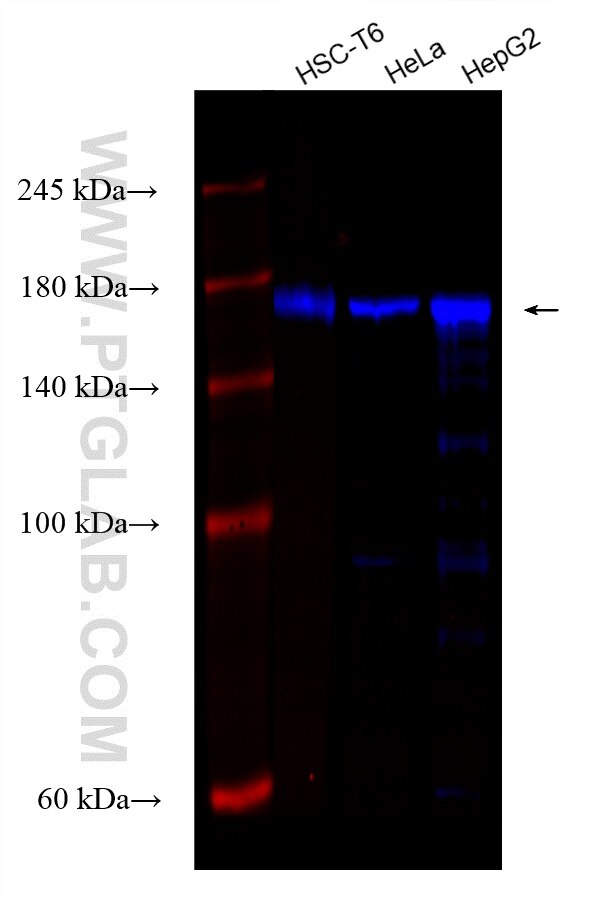Validation Data Gallery
Filter:
Tested Applications
| Positive WB detected in | HSC-T6 cells, HeLa cells, HepG2 cells |
Recommended dilution
| Application | Dilution |
|---|---|
| Western Blot (WB) | WB : 1:1000-1:4000 |
| It is recommended that this reagent should be titrated in each testing system to obtain optimal results. | |
| Sample-dependent, Check data in validation data gallery. | |
Product Information
CL750-81245 targets EEA1 in WB applications and shows reactivity with human, mouse, rat samples.
| Tested Reactivity | human, mouse, rat |
| Host / Isotype | Rabbit / IgG |
| Class | Recombinant |
| Type | Antibody |
| Immunogen | EEA1 fusion protein Ag28814 相同性解析による交差性が予測される生物種 |
| Full Name | early endosome antigen 1 |
| Calculated molecular weight | 162 kDa |
| Observed molecular weight | 162 kDa |
| GenBank accession number | NM_003566 |
| Gene Symbol | EEA1 |
| Gene ID (NCBI) | 8411 |
| RRID | AB_3673727 |
| Conjugate | CoraLite® Plus 750 Fluorescent Dye |
| Excitation/Emission maxima wavelengths | 755 nm / 780 nm |
| Form | Liquid |
| Purification Method | Protein A purification |
| UNIPROT ID | Q15075 |
| Storage Buffer | PBS with 50% glycerol, 0.05% Proclin300, 0.5% BSA , pH 7.3 |
| Storage Conditions | Store at -20°C. Avoid exposure to light. Stable for one year after shipment. Aliquoting is unnecessary for -20oC storage. |
Background Information
Early endosome antigen 1 (EEA1) is a marker of early endosomes and has an important role in endosomal trafficking. EEA1 contains coiled-coil regions and an FYVE-type zinc finger which interacts with phosphatidylinositol-3-phosphate. EEA1 functions as a Rab5 effector, mediates endosome docking and, together with SNAREs, leads to membrane fusion.
Protocols
| Product Specific Protocols | |
|---|---|
| WB protocol for CL Plus 750 EEA1 antibody CL750-81245 | Download protocol |
| Standard Protocols | |
|---|---|
| Click here to view our Standard Protocols |
